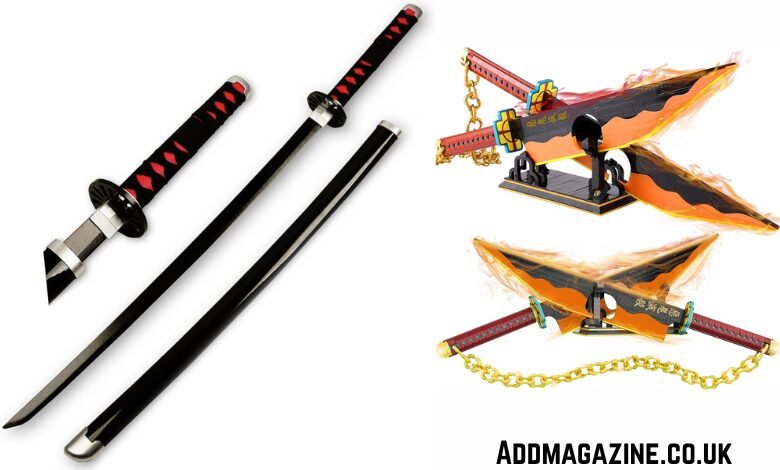What makes a weapon iconic? In the world of anime, it’s not just about sharp edges and deadly precision. The most memorable blades carry stories, represent character growth, and sometimes become more famous than the heroes wielding them. When you think of legendary anime swords, certain images probably flash through your mind—a massive cleaver wrapped in bandages, a rainbow-shifting katana, or a blade that’s impossibly long and sleek.
These weapons have transcended their shows to become cultural symbols. Cosplayers craft replicas with painstaking detail. Collectors display them proudly. Fans debate their relative power levels with the passion of sports enthusiasts arguing over championship teams. The connection between character and weapon in sword anime runs deeper than mere combat utility—these blades become extensions of personality, vessels of power, and sometimes the entire reason we tune in week after week.
Why Anime Swords Captivate Global Audiences
The fascination with anime sword designs stems from something fundamental in storytelling. Unlike generic weapons, these blades carry visual distinctiveness that makes them instantly recognizable. You can spot Ichigo’s Zangetsu or Tanjiro’s black Nichirin blade from a single frame, no context needed.
Japanese animation has perfected the art of weapon personification. Each sword anime treats its weapons as characters themselves, complete with backstories, special abilities, and transformations. This creative approach transforms simple combat tools into narrative devices that drive plot development and emotional resonance.
The cultural significance extends beyond entertainment value:
- Anime swords bridge traditional Japanese sword-making artistry with fantastical creativity
- They introduce international audiences to concepts like katanas, zanpakuto, and nichirin blades
- The designs inspire real-world craftsmanship and metalworking communities
- They create shared reference points across diverse fan communities worldwide
Bleach’s Zanpakuto: Where Personality Meets Steel
Bleach revolutionized how anime with swords approached weapon design. Creator Tite Kubo didn’t just give his Soul Reapers generic blades—he created an entire system where swords reflected their wielders’ souls. The zanpakuto concept meant each character’s weapon had unique abilities, appearances, and even personalities.
Ichigo’s Zangetsu: The Unconventional Giant
Ichigo Kurosawa’s Zangetsu breaks every traditional katana rule. Instead of an elegant curved blade, it’s an oversized cleaver wrapped in cloth bandages. The design screams rebellion, perfectly matching Ichigo’s hot-headed personality and his status as an outsider who never quite fits Soul Society’s mold.
The blade’s evolution throughout the series mirrors Ichigo’s growth. From the sealed state to the bankai’s sleek black daitō, and finally to the dual-blade true form, Zangetsu visually represents every major character development moment.
Byakuya’s Senbonzakura: Beauty and Devastation
Few sword anime feature weapons as visually stunning as Senbonzakura. The ability to scatter into thousands of cherry blossom petals that function as microscopic blades creates breathtaking fight sequences. It’s elegant destruction—perfectly suited to Byakuya’s aristocratic demeanor and calculated fighting style.
Demon Slayer’s Nichirin Blades: Color-Coded Power
Demon Slayer took a different approach to anime sword mythology. The Nichirin blades change color based on their user’s innate qualities and breathing style. This simple concept created endless speculation among fans before characters revealed their blade colors.
Tanjiro’s Rare Black Blade
When Tanjiro’s sword turned pitch black, it signaled something special. Black Nichirin blades are exceptionally rare in the series, and their wielders historically face grim fates. The color choice adds weight to Tanjiro’s already difficult path and makes his weapon visually distinct against the more common blue, red, and yellow blades.
The checkered pattern on Tanjiro’s hilt, matching his haori, demonstrates how sword anime uses small design details to reinforce character identity. You can spot that black blade and green-black checkered pattern anywhere.
Zenitsu’s Yellow Lightning Blade
Zenitsu’s bright yellow Nichirin blade perfectly matches his Thunder Breathing technique. The color coordination between breathing style, blade color, and visual effects during combat creates cohesive fight choreography. When that yellow blade comes out, viewers know lightning-fast strikes are coming.
One Piece’s Unique Blade Philosophy
One Piece approaches anime swords differently than most shonen series. The swords don’t possess inherent magical powers—instead, they’re graded by quality and rarity, with legendary blacksmiths crafting the most prized weapons.
Zoro’s collection represents this tiered system:
- Wado Ichimonji: A treasured O Wazamono grade blade with white scabbard, carrying emotional significance from his childhood friend Kuihina
- Sandai Kitetsu: A cursed but powerful blade that Zoro tamed through sheer willpower
- Enma: A legendary sword previously wielded by Kozuki Oden, capable of drawing out excessive amounts of Haki
The three-sword style itself makes Zoro’s fighting approach memorable. Watching him hold a blade in his teeth defies logic, but it has become one of the most iconic images in anime with swords.
Inuyasha’s Tessaiga: Transformation Through Combat
Tessaiga represents the classic transformation weapon trope that many sword anime have adopted. In its sealed state, it’s a rusty, beaten katana. When Inuyasha draws it with protective intent, it transforms into a massive fang-shaped blade.
The sword’s various techniques—Wind Scar, Backlash Wave, Adamant Barrage—gave it video game-like progression. Each new ability came through story development, making Tessaiga feel like a character growing alongside Inuyasha rather than just a static tool.
Rurouni Kenshin’s Sakabato: The Reverse Blade
Sometimes, the most interesting anime sword is the one designed not to kill. Kenshin’s sakabato features a reversed edge, with the sharp side facing inward. This unusual design perfectly embodies his vow to never kill again after his violent past as an assassin.
The sakabato proves that weapon design in anime swords can communicate character philosophy without a single word of dialogue. One look at that reversed blade tells you everything about Kenshin’s redemption arc and personal code.
Akame ga Kill’s Murasame: One Cut, One Kill
Murasame takes the cursed blade concept to its logical extreme. One cut from this anime sword means certain death as its curse spreads through the victim’s body. The weapon’s brutal efficiency matches Akame ga Kill’s unforgiving narrative, where beloved characters die without plot armor.
The black blade with red accents creates an ominous aesthetic that warns viewers of its lethal nature. In sword animes, visual design often telegraphs danger level—Murasame’s appearance doesn’t disappoint.
What Makes These Weapons Stand Out
The recurring elements that make anime with swords so memorable come down to specific design principles that creators consistently apply.
Key features that define legendary anime swords:
- Distinctive silhouettes that remain recognizable even in shadow
- Color schemes that complement the wielder’s personality and abilities
- Transformation mechanics that provide visual spectacle during key moments
- Symbolic connections to character backstory and development arcs
- Unique sound effects that become audio signatures for each blade
The Lasting Impact of Legendary Blades
These iconic anime swords have created a visual language that fans worldwide understand instantly. Whether you prefer the spiritual connection of zanpakuto, the color-coded system of nichirin blades, or the quality-graded approach of One Piece, each series contributes something unique to how we think about weapons in animation.
The designs inspire countless fan creations, from hand-forged replicas to 3D-printed props. Conventions overflow with warriors carrying these famous blades, each hoping to capture some of the power and personality these weapons represent.
What makes these swords truly legendary isn’t just their design or abilities—it’s how they’ve become inseparable from the stories we love. They’re proof that in skilled hands, even an inanimate object can become unforgettable.




